Convenience and ease of use: Grundfos heating circulation pump
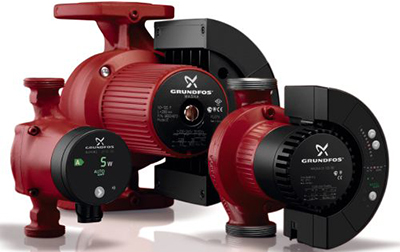
Grundfos brand circulation pumps are known all over the world - the most common heating equipment.
The Grundfos concern began its history in the 1950s in Denmark as a small company developing and producing components for heating and water supply in the private sector. Today it is 75 companies in 42 countries peace.
General characteristics of the Grundfos circulation pump
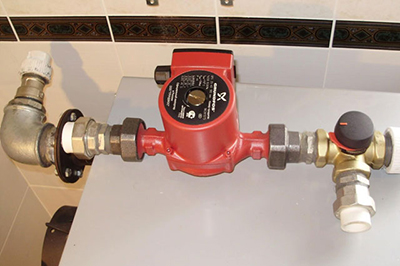
The company produces wide range units suitable for use in heating systems, hot water supply, and hot water recirculation.
Grundfos brand products work with solid fuel boilers (they have the greatest temperature differences), gas, electricity and even in projects with innovative heat sources: solar energy or heat pump.
Pros Grundfos products are reliable, trouble-free and versatile.
The only one minus — relatively high price of the product. The cost of one unit depends on the power, configuration, productivity and fluctuates within the range from 5 to 70 thousand rubles. Therefore, it is important to choose the right system configuration. Considering the service life and reliability of the design, investments in such equipment are fully justified/
The company produces models with flange mounting and traditional screw mounting: American. The compact design allows for a standard landing size 180 mm install pumps in a wide range of power. And for particularly cramped conditions, pumps with the same performance can have reduced seating distance - 130 mm.
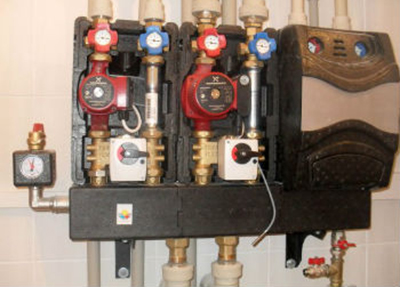
The markings are standard and fairly simple.
Letter index gives an idea of the pump's specialization, followed by three groups of numbers, the first of which indicates the connection diameter, the second - the pressure value in decimeters, the third - the installation length.
The main letter indices that are indicated on the devices:
- BP means a nut/nut fastener combination.
- BP/HP — nut/thread.
- UP - circulation.
- S - equipped with a rotor speed switch.
- D - duplex, paired.
- F — flange connection. The absence of this letter in the marking indicates a threaded connection.
- N — the body is made of stainless steel (the absence of a letter indicates a cast iron body, IN - about the bronze body).
- A — the body is equipped with an air release valve.
- K — a special design that allows the use of antifreeze as a coolant.
So, marking UPS 25–60 130 says that this is a circulation pump with a power (speed) switch, has a connection diameter 25 mm, pressure 6 meters and reduced landing dimensions 130 mm.
Types of devices for heating systems
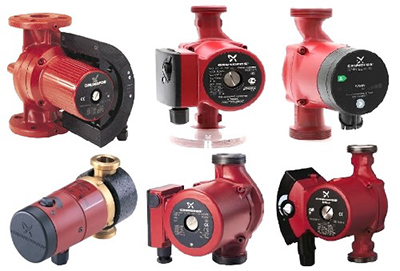
Grundfos pumps designed to operate as circulation pumps are divided into: two main groups, the difference between which lies in the operating conditions of the drive motor rotor.
If only the pump impeller comes into contact with the pumped liquid, then such a design is called "with dry rotor".
If the transported liquid contains both the impeller and the motor rotor, it is a pump according to its characteristics. with wet rotor.
Both types of construction have their own characteristics and areas of application.
Dry
Dry rotor is good high efficiency installations and high power. Also, pumps of this type are not very sensitive to the quality of the coolant and tolerate pollution well suspended solids and fine abrasives. Operates at temperatures significantly exceeding the permissible operating values of wet rotor pumps.
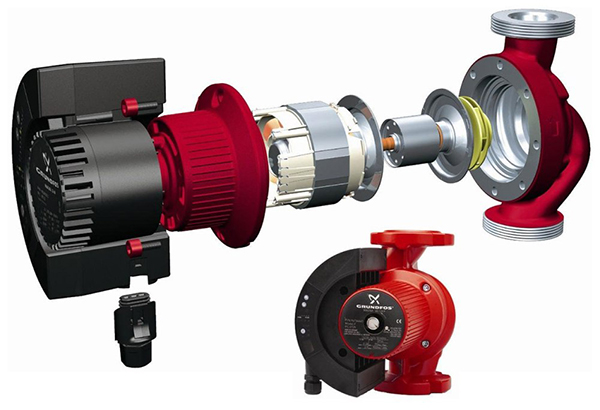
Photo 1. Disassembled Grundfos circulation pump for a heating system, equipped with a dry rotor.
Of the minuses — shorter service life, comparatively high cost, slightly larger dimensions, need for regular maintenance (lubrication), high noise. For this reason, it is better to install models with a dry rotor in a separate room. But at the same time, they are capable of “pumping up” large cottages or even apartment buildings.
Wet
The wet rotor is more compact, virtually silent, extremely durable when installed correctly. Does not require maintenance during operation, but is less productive, with a relatively low efficiency - no more than 50%.
With overall low power consumption (on average 6-100 W depending on the power, mode and load) this characteristic is not decisive.
This type of pumping equipment is extremely sensitive to the quality of the pumped liquid, since it is both a lubricant and an antifreeze for the rotor. Therefore, such devices cannot operate at a temperature above 115 degrees and require mandatory installation of a mesh mud filter in front of the pump.
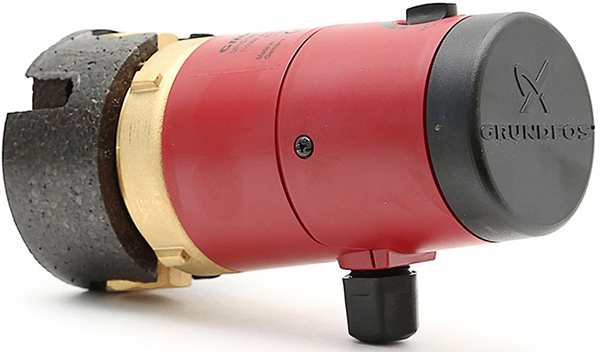
Photo 2. Grundfos compact circulation pump with wet rotor, sensitive to the quality of the pumped liquid.
Wet type devices are widely used in individual heating systems and water supply as additional circulation pumps of the make-up line.
Installation rules for Grundfos water equipment
First, you need to decide on the installation location. In theory, the device can be installed in any break in the main line. But in practice, it is better to do this on the return pipe - as close to the boiler as possible. Between the boiler and the pressure (expansion) tank. This arrangement will reduce the thermal load on the design of the pump and its working blades.
Important! When installed on the outlet main line, the coolant may boil on the impeller blades, which will ultimately lead to to rapid wear.
The best option would be to choose horizontal section of the pipe. Although it is possible to install the pump on a vertical section.

True, it is important here that the flow in this place goes from the bottom up, and not the other way around - to avoid air locks.
When installing the pump, you need to ensure that it the rotor stood horizontally — when tilted, air may accumulate and wear out quickly due to insufficient lubrication (in pumps with a wet rotor).
Terminal box pump at the same time placed on topto prevent water from entering when the main line loses its tightness.
Attention! It is important to ensure that the equipment is not installed close to a heating radiator, which may cause cause of failure of internal thermostat.
The pump is connected via a bypass - bypass branch. At the selected point in the main line, a gap is made into which a ball valve is installed for automatic regulation, or a ball valve for manual switching of the mode, which is throttled by a bypass jumper.
With two shut-off ball valves A circulation pump is installed at the inlet and outlet (to be removed if necessary). A mud filter and a valve (if there is no built-in one) for air removal are always installed before it.
Guided by the maximum power consumption indications (indicated on the body and in the technical data sheet), select an automatic fuse for the power supply. It is possible to connect the device via the automation system: thermostat or timer.
Selection parameters
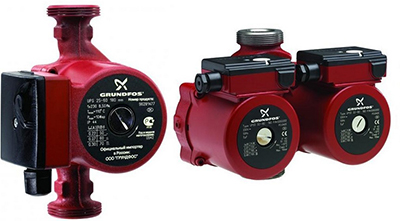
If the Grundfos pump is considered as a feed pump (to replenish coolant losses and fill the system), then its main parameter is considered to be performance. Usually it is taken from the calculation 0.5% by volume the entire system.
But if the water device will work as a full-fledged circulation pump, then the choice should be stricter.
Power
This parameter shows how much volume the device is pumping. per unit of time. The choice depends on the heating capacity. It is better to take a pump with a small power reserve (but without fanaticism - the reserve 10% productivity enough), since the noise level may be exceeded in modes close to the limit. As a rule, the factory settings correspond to the lowest noise.
Pressure
The pressure depends on the system's resistance to dynamic pressure and number of storeys of the heated premises. The more turns and control valves, the higher the indicators should be.
The ultimate pressure depends on the characteristics of the system. Static pressure in open systems is determined the height of the expansion tank, in closed ones - pressure membrane.
Speed and noise
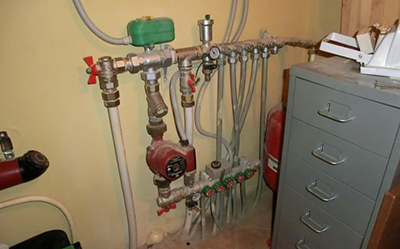
In addition to these parameters, you can also pay attention to the additional options of the latest models of the concern.
For example, a pump with a three-position speed switch allows you to adapt the operation to the needs of the system and save on energy consumption (when compared to single-speed models).
But modern developments with electronic regulators are capable of adjusting so precisely to the conditions and needs of the heating system that they provide reducing energy consumption by 2–5 times. Not to mention reducing noise.
The following should be known about noise: models with a dry rotor are noticeably noisier. Wet rotor pumps are practically inaudible during operation. But if their capacity exceeds the system's needs or they operate at the limit, the noise increases. And also noise means there is air in the system.
Reference! The latest Grundfos models are an excellent alternative to outdated pumps from other brands - they consume less energy and work noticeably quieter.
Useful video
Video about possible breakdowns of one of the models of the Grundfos circulation pump and repair methods.
General conclusion
Grundfos circulation pumps meet all modern requirements. When selected correctly and installed correctly, they work with the greatest efficiency and for the longest possible time, without requiring any reconfiguration or complex maintenance. For this reason, Grundfos equipment is a leader in the world.








